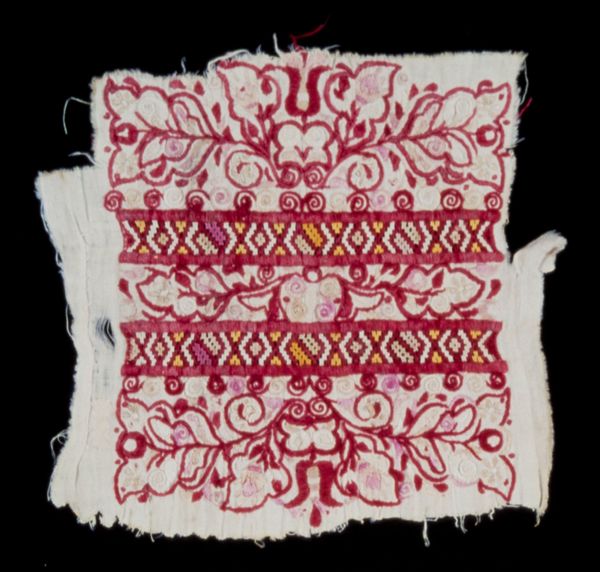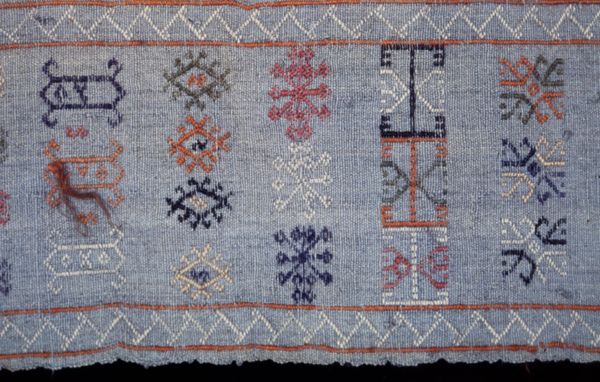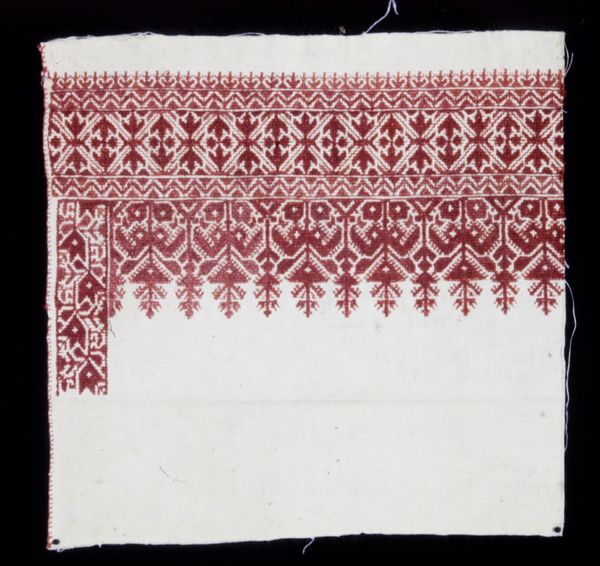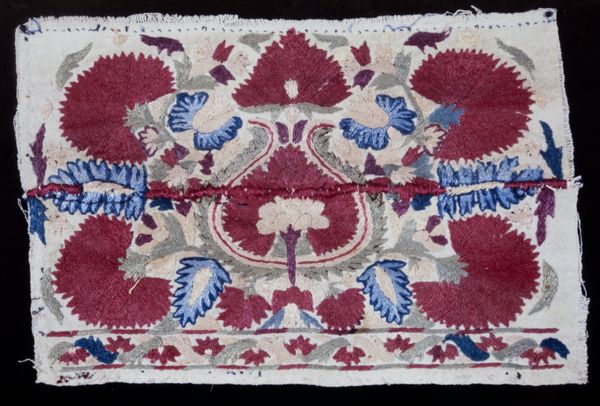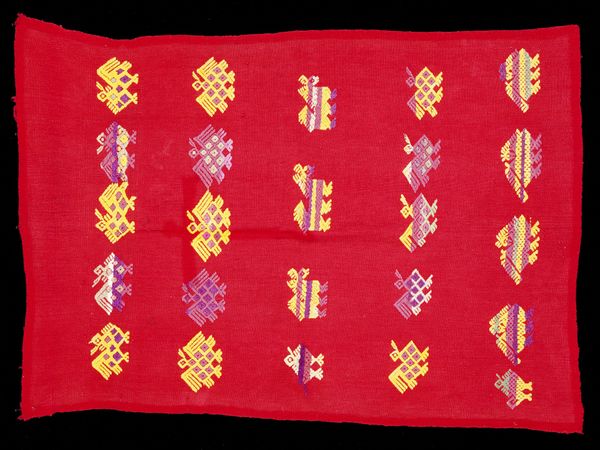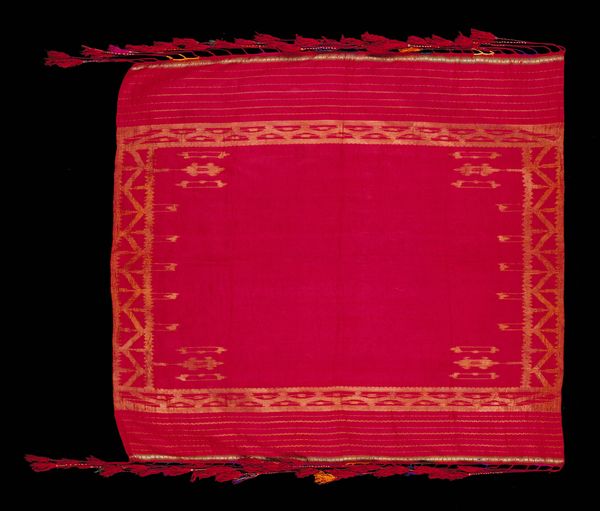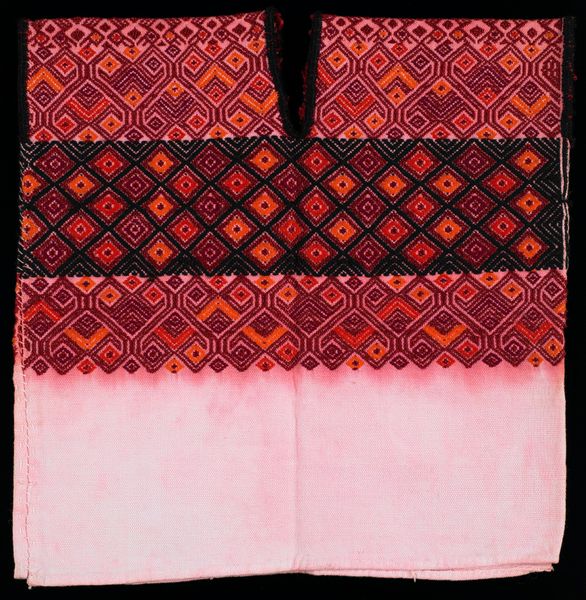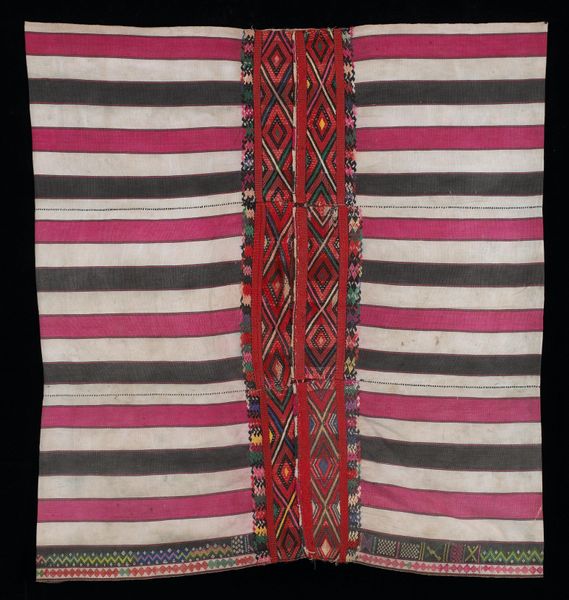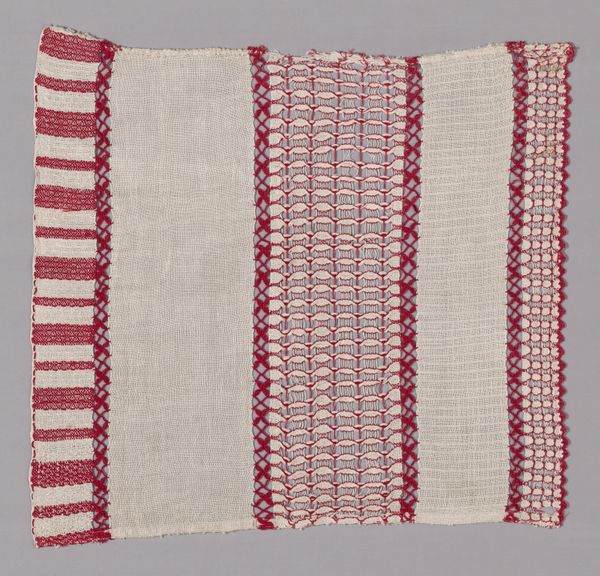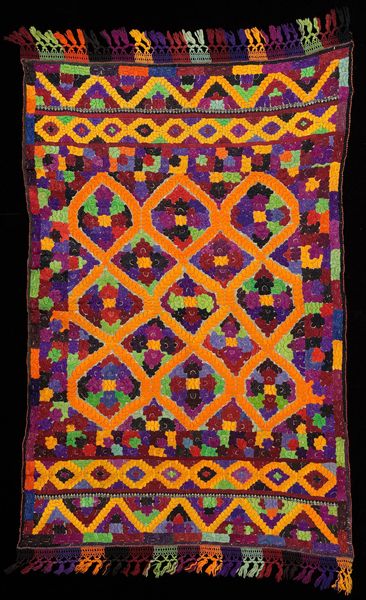
fibre-art, textile, cotton
#
natural stone pattern
#
fibre-art
#
textile
#
fashion and textile design
#
hand-embroidered
#
folk-art
#
repetition of pattern
#
regular pattern
#
pattern repetition
#
cotton
#
textile design
#
decorative-art
#
imprinted textile
#
layered pattern
#
combined pattern
Dimensions: 7 7/8 x 6 1/4 in. (20.02 x 15.88 cm)
Copyright: Public Domain
Curator: This textile fragment, of unknown authorship, likely dates to the 19th century. It is part of the Minneapolis Institute of Art's collection. Editor: Immediately, the unfinished edges give me a poignant feeling. This isn’t a pristine tapestry, it’s a glimpse into something larger and more personal. The repeated floral patterns mixed with the geometric bands, mainly in that striking burgundy, suggest both control and abandon. Curator: Absolutely, and considering the context, textile production in the 19th century, particularly folk art, often served multiple purposes. Decoration was one aspect, but it also acted as a form of storytelling, preserving cultural memory, and expressing identity, especially for women and marginalized communities. This piece offers, visually, pattern-and-decoration aesthetic elements with layered regular patterns in combined hand-embroidered design. Editor: The repeated motifs lend themselves well to those interpretations. I also think of the labor inherent in textile production, how acts of weaving, embroidering, especially with cotton, can become forms of resistance or expressions of agency within restrictive social structures. Curator: I agree, tracing those connections—the labour, the cultural expression—illuminates so much. The regularity of the patterning almost seems to push against the "fragment" title; it feels intentional, considered, hinting at a completed whole that now exists only in partial form. The imprinted textile presents fashion and textile design through regular and combined pattern repetitions. Editor: Perhaps the fragment status enhances its message? Consider how an incomplete narrative challenges established power structures more readily. By showcasing absence and irresolution, this object can resist normative history by reclaiming subjectivity, agency, and identity outside mainstream culture. What’s more, textile design often had to navigate very conservative public exhibition requirements. Curator: That's an intriguing possibility. By leaving things open, questioning fixed narratives, the "Fragment" engages viewers in a more participatory role. This connects directly to its institutional setting in a gallery; the object generates multiple stories depending on social awareness of history. Editor: Indeed. This object prompts us to not only reconsider narratives but actively shape a more nuanced history of art and culture through collaborative encounters. Curator: A crucial aspect for viewers to engage with in order to interpret the meaning and place of historical artifacts within our cultural landscape. Editor: Well said.
Comments
No comments
Be the first to comment and join the conversation on the ultimate creative platform.
